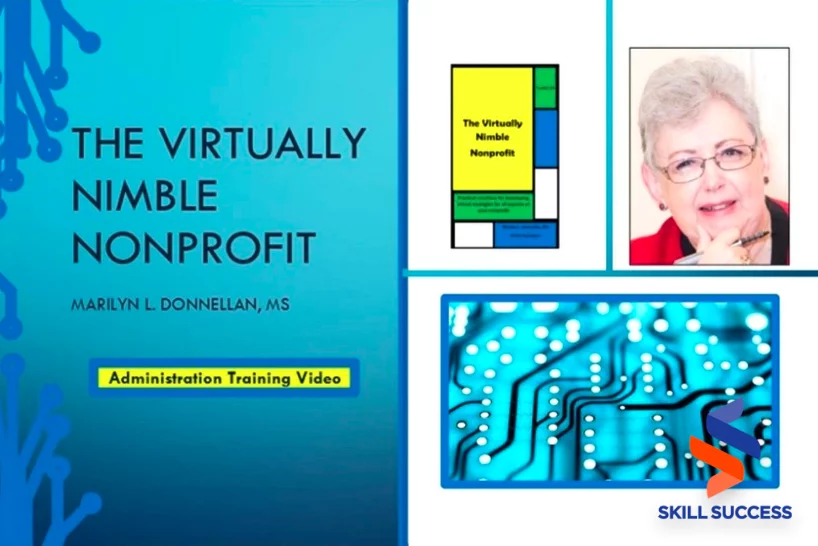Nonprofit management is unique because it does not work precisely like government agencies or business enterprises but shares common attributes and challenges present in both. It is also interesting how nonprofits cannot generally pursue for-profit strategies but remain competitive to fund programs and upcoming events.
Nonprofit organizations rely on donations and volunteer work. The lack of internal and independent financial resources makes nonprofit leaders vulnerable to bias and inconsistency. In making nonprofit management decisions, leaders may succumb to external pressure and fail to serve their communities in the process.
There is no easy way of fulfilling leadership and management roles for nonprofits. But thankfully, there are proven ways to get around each hurdle.

How to improve nonprofit management
Nonprofit management boils down to effectively creating and implementing a service program that embodies the goals and aspirations of a nonprofit organization. Nonprofit leaders must advance strategies that remain true to their cause but do not sacrifice the financial stability of the organization.
Listed below are flexible management tips nonprofits may follow to bolster success rates in fundraising, community programs, and other related concerns.
1. Change with the times
Change challenges nonprofits. As more shifts happen, stakeholders must create new practices without compromising a nonprofit mission or goal. However, no matter how nonprofits resist change, there are times it is inevitable.
According to Stanford Social Innovation Review, the pandemic changed the fundraising landscape forever. As a result, experts predict that nonprofits have to implement rigorous programs to handle new practices and problems. They should also integrate modern management tools like computer programs to keep up with the faster-paced world.
Nonprofits may survive change by increasing their proficiencies. One of the best ways to do so in the Internet era is by taking online nonprofit training courses.
2. Personalize your content
Nonprofits do not only compete with others in the nonprofit sector. You will be competing against the whole human community! Anything that tempts a donor to spend their money somewhere else is a competitor.
Because the nonprofit sector is ever so competitive, it should be a nonprofit's mission to stir positive interests from every targeted community. Capturing your audience's loyalty and interests should constantly be a high priority.
Personalizing content for nonprofit marketing is critical to creating lasting contact with potential donors. For example, during events, create and sell tickets that will help make donors join your cause.
3. Attract new and young donors
The millennial and Gen Z population holds the most wealth in society today, making them ideal targets for solicitation. However, unlike the previous generations, the current ones act differently.
According to Forbes, the millennial and Gen Z population care more about causes than institutions. They would least likely fund charities that do not align with their values, even if the same were traditionally supported by family members generations ahead of them.
Search for innovative but effective fundraiser techniques to attract new and young donors. Contact them through modern platforms, like social media. Also, be specific with your program descriptions because they like to be informed before becoming a donor or volunteer.
4. Leverage digital tools and platforms
The Nonprofit Times observed that more than half of nonprofit organizations do not use digital marketing. Moreover, even among those who tried to go digital, a good chunk still failed to utilize the available tools and platforms fully.
If you are making any nonprofit management changes, prioritize the modernization of your marketing process. Then, search for digital services that work for your expectations and budget.
Skill Success recommends Google Ad Grants the most of the existing online marketing platforms. Besides being an effective nonprofit management tool, it offers $10,000 worth of free advertising per month to eligible beneficiaries.
5. Create an inclusive culture
Philanthropy should not end with giving. In establishing nonprofit management policies that matter, you should also look into how your actions shape culture, norms, and human resources in general.
A nonprofit program should always be inclusive. Failing to uphold this value could make a program downright offensive. According to professional studies, nonprofits that ignore traditions and inclusion policies will eventually lose influence in their space and become irrelevant.
On the flip side, being genuinely inclusive with beneficiary communities make nonprofit management more efficient. In this setup, people become more responsive and engaging. Please be more considerate of your respondents' identities and sentiments.
6. Care about your employees
A nonprofit program is not only about the directors or donors. Do not forget about those that do the most—the employees.
Notes on maintaining positive relationships with nonprofit employees:
- Pay them well
- Facilitate their career transition
- Provide career growth opportunities
- Give credit to where credit is due
- Implement objective performance management standards
If you hire someone to assist you in your philanthropic endeavors, treat them how like any other good corporate employer would. Many nonprofits fail to adapt corporate-sector ideologies, hurting employees' satisfaction at work. Nonprofits should remain competitive to inspire employees to stay employed and continuously do better.
7. Make strategic partnerships (even outside the nonprofit sector)
The most common ways for nonprofits to generate income are donations, grants, and memberships. However, nonprofit organizations may not actively implement a financial program or scheme similar to for-profit corporations due to legal restraints.
There are many limits to the business aspect of nonprofits, but there are instances when they could form corporate partnerships.
In a nonprofit-corporate partnership (or corporate-charity partnership), a charitable institution and a for-profit corporation collaborate to undertake specific goals that reflect their shared values. Most of the time, the corporate partner sponsors an event prepared by the nonprofit partner.
Nonprofit-corporate partnerships are not uncommon. One memorable partnership was with The Global Fund and Product Red. The Global Fund, a nonprofit organization aiming to end HIV, tuberculosis, and malaria, tapped with Product Red, a licensed brand of the private company "(RED)." Product Red distributed red-colored products, like a red iPhone 11 or Armani shirt, and the proceeds will be transferred to The Global Fund.
8. Never lose sight of your mission
More than committing mistakes due to the technical challenges of raising and maintaining a nonprofit institution, the most dangerous part is losing sight of your mission. If you find yourself in this situation, think about the lives you want to change for the better.
Expect that there will be temptations to perform illegal and immoral acts. But despite all the alluring promises, always choose to create ethical business decisions. If you get caught committing charity fraud, the penalties can be devastating and permanent.
Recommended courses for nonprofit organizations
Are you looking for a convenient way to learn more about nonprofits? Skill Success got you covered. Explore our expansive selection of nonprofit management courses covering strategic planning, fundraising, and more. Since the classes are pre-recorded, you can access them anytime, anywhere.
Here are some courses we picked for you:
1. How to Use Digital Strategies in Nonprofit to Acquire New Donor Prospects

Nonprofits should capitalize on multichannel fundraising. Distributing resources into multiple avenues would increase profitability rates and decrease the risks of losing everything at once. Digitalizing portions of the nonprofit strategy is an excellent way to advance this idea.
How To Use Digital Strategies In Nonprofit To Acquire New Donor Prospects is the quintessential introductory course for nonprofits branching into the digital space. It contains nonprofit management lessons relating to effective communication and investment in digital resources.
Finishing this hour-long course will grant you critical knowledge and skills for attracting new patrons online.
Take this course2. An Introduction to Equality, Diversity and Inclusion

Effective nonprofit management is not only limited to fundraising and philanthropy. It is equally important to develop mechanisms that forward social causes, too. After all, operating in the nonprofit sector is always about giving service to the less fortunate.
An Introduction To Equality, Diversity and Inclusion is one of the must-take classes for everyone developing their nonprofit leadership proficiency. This course talks about core social topics that nonprofit organizations handle every day.
Nonprofits often have equality, diversity, and inclusion as part of their missions, but not all embody these concepts wholeheartedly. Avoid this common nonprofit pitfall.
Take this course3. The Virtually Nimble Nonprofit

According to the COVID-19 Community Impact Survey conducted in August 2021, nonprofit respondents had a net decrease of 16% from personal donations and 24% from corporate donations. Because of this grave imbalance, many nonprofits failed to sustain their operations.
In response to the financial crisis caused by the pandemic, nonprofits ventured into the Internet to expand their donor pool. If you are exploring this option, take The Virtually Nimble Nonprofit.
This course is a simplified toolkit for nonprofits to transition digitally. It features instructional materials for strategy planning, contingency funding, and resource development.
Take this courseGrow with your nonprofit organization
The success or failure of nonprofit organizations is a reflection of nonprofit leadership. If a nonprofit management team is weak and regressive, its nonprofit activities would not likely perform as well as expected.
Avoid this negative development by becoming a better executive director or manager!
Every personnel can improve their overall efficiency by undergoing nonprofit courses. Each class is a deep dive into an aspect of nonprofit management and its secrets.
On top of learning more about the nonprofit sector, stakeholders should also focus on organizational leadership. It is critical to nonprofit management because it equips leaders with the skills necessary for distributing work, resolving and preventing conflicts, and facilitating continuous growth for everyone.


